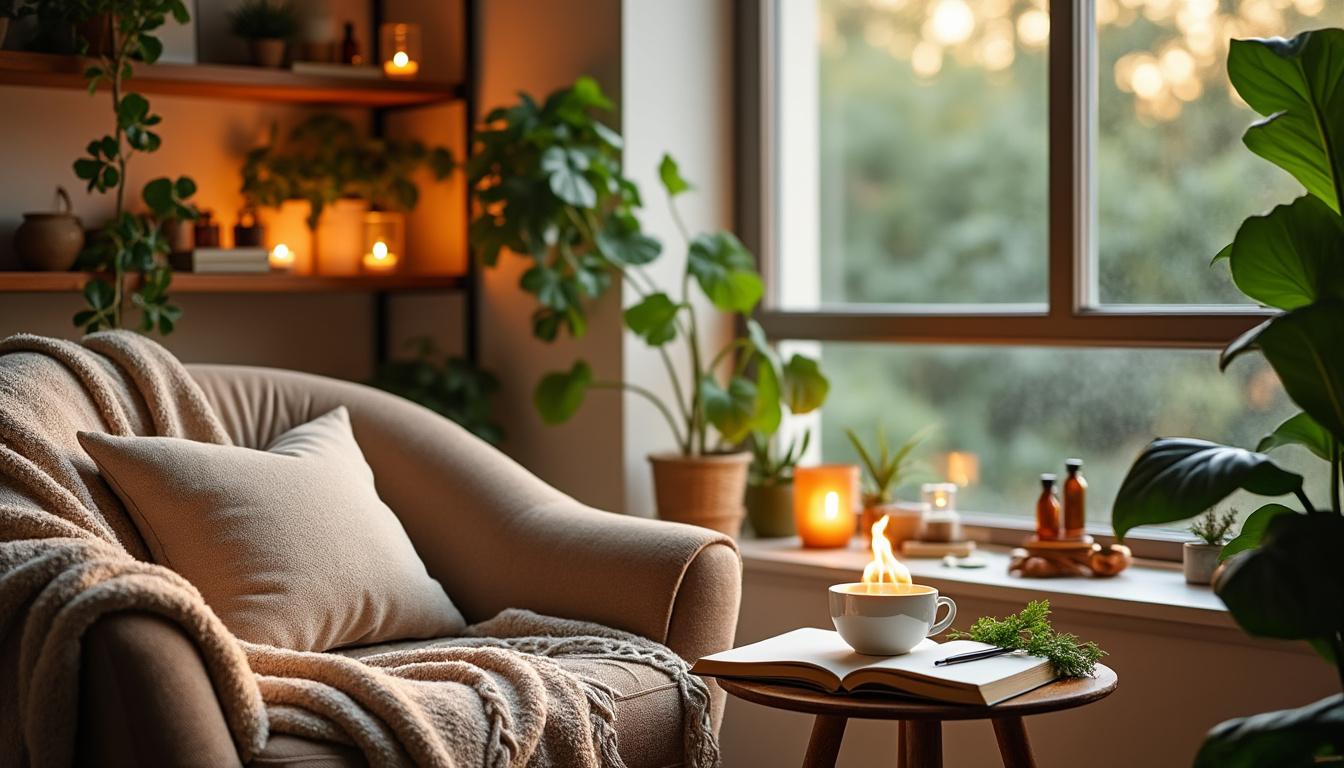In today’s fast-paced world, crafting a self-care routine isn’t merely a trend—it’s a necessity for maintaining both mental and physical well-being. Contrary to the fleeting portrayals on social media glamorizing self-care as indulgent spa days or elaborate rituals, true self-care encompasses a broad spectrum of practices aimed at fostering resilience, balance, and holistic health. Understanding this distinction is crucial for anyone striving to build a sustainable, personalized routine that genuinely supports their life’s demands and personal values.
Far more than surface-level pampering, effective self-care integrates physical health, emotional stability, mental clarity, social connection, and even environmental and spiritual nourishment. Yet, despite its importance, many struggle with how to begin or sustain such a routine, often intimidated by the pressure to imitate influencers or overwhelmed by their own commitments. The reality is that self-care must be tailored to individual needs, anchored in realism and adaptability.
In unraveling how to create and maintain a self-care plan that works, this exploration sheds light on the fundamental principles, practical steps, and mindset shifts that empower individuals to reclaim control over their health and happiness. Drawing on contemporary insights and tools—including resources like The Calm app, Headspace, and platforms such as BetterHelp—it becomes evident that self-care is not about perfection but progression.
Building the Foundation: Identifying Your Unique Self-Care Needs in 2025
Before assembling a self-care routine, it is essential to conduct a thorough personal inventory of one’s current state. Each individual faces unique challenges—stress from demanding careers, social isolation, emotional exhaustion, or physical health concerns—that require distinct attention. Recognizing these areas helps in prioritizing what aspects of health and wellness need immediate focus.
Self-care today spans multiple domains, reflecting a holistic understanding of well-being. These include:
- Physical Self-Care: Activities that promote bodily health, such as consistent exercise, balanced nutrition (including convenient options like Soylent), and proper sleep hygiene.
- Mental Self-Care: Practices aimed at cognitive health, including meditation apps like Headspace or The Calm, puzzles, and continuing education.
- Emotional Self-Care: Utilizing healthy emotion regulation strategies, therapy sessions with platforms like BetterHelp, or daily journaling.
- Social Self-Care: Engaging with supportive communities, family, or friends to combat isolation.
- Creative Self-Care: Exploring artistic outlets such as painting, music, or dance to stimulate imagination and joy.
- Environmental Self-Care: Organizing and decluttering spaces to reduce stress and increase comfort.
- Spiritual Self-Care: Connecting with greater meanings through practices like gratitude, meditation, or time in nature.
- Professional Self-Care: Setting boundaries and incorporating breaks to mitigate burnout.
Once these areas have been identified for attention, the next step involves a realistic appraisal of time, resources, and preferences. This insight aligns with the principle that not every influencer’s five-day Pilates routine is a fit for everyone—sustainability over style is paramount.
Recognizing this, practical self-care strategies might include incorporating accessible physical activities such as walking or yoga instead of high-cost gym memberships. Using apps like MyFitnessPal can streamline nutrition tracking, while products from brands like Herbivore Botanicals and Tatcha can support skin health when chosen intentionally rather than impulsively.
| Self-Care Domain | Examples | Tools & Resources |
|---|---|---|
| Physical | Exercise, Sleep Hygiene, Balanced Nutrition | MyFitnessPal, Soylent, Herbal Supplements |
| Mental | Meditation, Reading, Puzzles | The Calm, Headspace |
| Emotional | Therapy, Journaling, Self-Compassion | BetterHelp, Support Groups |
| Social | Calling Friends, Social Activities | Community Apps, Local Events |
| Environmental | Decluttering, Organizing | Organizational Tools, Budget Lighting Upgrades |
Establishing this foundational understanding empowers individuals to progress with intentionality, ensuring their self-care routine is both relevant and effective.
Step-by-Step Guide to Crafting a Personalized Self-Care Routine
Building a routine that lasts demands a balance between ambition and feasibility. The process can be distilled into clear progressive steps detailed below:
- Step 1: Assess Your Needs – Reflect critically on areas experiencing strain or neglect.
- Step 2: Start Small – Choose one or two manageable practices rather than overwhelming changes.
- Step 3: Prioritize Basic Self-Care – Emphasize foundational habits like sleep, nutrition, and movement.
- Step 4: Schedule Your Practices – Allocate dedicated time in daily or weekly calendars.
- Step 5: Embrace Flexibility and Consistency – Understand that routine adaptations are natural and progress matters more than perfection.
- Step 6: Reflect and Readjust – Periodically evaluate what’s working, and be willing to alter as needed.
A practical example illustrates this approach: committing to a 10-minute evening meditation with The Calm app can replace the vague goal of “relax more.” This habit can be scheduled just before bedtime, gradually extending once comfortably established. Similarly, replacing fast food with weekly meal preparation supported by Soylent or healthy snack options facilitates lasting nutrition habits without burdening busy schedules.
Routine formation also benefits from accountability—sharing goals with trusted friends or through social platforms encourages follow-through. Nest Wellness communities, for example, provide collective motivation to foster sustained engagement in wellness activities.
| Routine Step | Example Action | Recommended Tools |
|---|---|---|
| Start Small | 5-minute journaling or stretching | Journal Apps, YouTube Yoga Tutorials |
| Prioritize Basics | Track sleep and increase water consumption | Sleep Trackers, Water Reminder Apps |
| Schedule Time | Block 15 minutes for meditation daily | The Calm, Smartphone Alarms |
| Flexibility | Modify routine due to work demands or travel | Calendar Apps, Flexible Reminder Systems |
Understanding and Integrating Emotional and Mental Self-Care Practices
In 2025, emotional and mental self-care remain pillars of comprehensive well-being, especially amid global uncertainties and increasing digital distractions. Rather than equate self-care to indulgent experiences, it is critical to embrace methods that sustain mental balance and emotional resilience over time.
The first critical tool in this domain is the consistent engagement with mental health professionals, whether through in-person therapy or digital platforms like BetterHelp. Therapy is an active, ongoing process of emotional regulation, coping skill enhancement, and self-awareness cultivation—far beyond simple relaxation.
Practical emotional self-care also involves cultivating compassion toward oneself through daily affirmations, journaling, or mindfulness practices. Incorporating short meditation sessions via apps such as Headspace or Calm can reduce anxiety, boost focus, and promote calm throughout challenging days. These tools have shown significant clinical benefits in numerous studies and are widely accessible in 2025.
- Engage with a therapist or support group regularly.
- Create daily journaling rituals to reflect on emotions.
- Practice mindfulness or guided meditations.
- Use breathing exercises to manage acute stress.
- Set emotional boundaries to maintain healthy relationships.
Besides these practices, social self-care also deeply impacts emotional health. Human connection counters loneliness, reduces stress hormones, and provides vital encouragement. Scheduling regular social interactions—even brief calls or virtual meetups—helps maintain emotional balance.
| Emotional/Mental Care Practice | Description | Recommended Resources |
|---|---|---|
| Therapy | Ongoing emotional support and coping strategies | BetterHelp, Licensed Professionals |
| Mindfulness Meditation | Guided focus on present-moment awareness | The Calm, Headspace Apps |
| Journaling | Emotional processing through writing | Journaling Apps, Physical Notebooks |
| Social Connection | Scheduled meaningful interactions | Phone Apps, Social Media Groups |
Incorporating Physical and Environmental Self-Care for Sustained Vitality
Physical self-care remains a cornerstone of overall wellness. Beyond aesthetic benefits, maintaining physical health boosts energy, sharpens cognition, and reduces chronic disease risk. Integrating physical self-care into daily life doesn’t demand costly gym memberships, but rather feasible, enjoyable activities appropriate to individual fitness levels.
Walking, yoga, or simple stretching sessions serve as excellent entry points. Products like Lush offer natural care items that enhance the self-care experience without excessive complication. Nutrition, supported by adaptable solutions such as Soylent, encourages balanced meals even on the busiest days. These practical choices ensure the routine is sustainable.
Environmental self-care, often overlooked, also significantly impacts well-being by shaping spaces that alleviate stress and enhance focus. Actions such as decluttering, improving lighting—with budget-friendly options available as noted by resources like budget lighting upgrades—and adding plants to living areas contribute to a serene environment conducive to relaxation and productivity.
- Engage in at least 15 minutes of physical activity daily.
- Use skincare products from trusted brands such as Tatcha and Herbivore Botanicals.
- Maintain a tidy living or work space to reduce distractions.
- Enhance lighting to promote mood and energy using budget-conscious upgrades.
- Incorporate natural elements like plants and calming colors.
| Physical/Environmental Activity | Purpose | Suggested Tools / Products |
|---|---|---|
| Daily Movement | Increase energy and physical fitness | Yoga apps, Walking shoes |
| Nutrition | Fuel body with balanced nutrients | Soylent, Healthy Meal Plans |
| Skin Care | Maintain skin health and glow | Tatcha, Herbivore Botanicals |
| Space Adjustment | Reduce stress, boost focus | Budget lighting upgrades, Organizing tools |
Strategies for Sustaining Your Self-Care Routine Through Life’s Fluctuations
Consistency over time is the ultimate challenge in self-care. Life in 2025 is undeniably dynamic with shifting responsibilities and unexpected stressors demanding flexibility. Recognizing and anticipating these fluctuations allows for a resilient self-care routine adaptable to changing circumstances.
Essential to this strategy is adopting a mindset that values progress over perfection. Missing a day or modifying activities does not represent failure but rather an opportunity to recalibrate. Embedding reminders and accountability methods—whether through apps like The Calm or collaborative wellness groups such as Nest Wellness—strengthens commitment.
Cultivating social and professional support also enhances sustainability. For entrepreneurs and busy professionals, setting firm boundaries and periodically revisiting priorities with the help of mental health support services can prevent burnout. Engagement with platforms like BetterHelp enables ongoing guidance tailored to evolving needs.
- Use reminders and habit trackers to maintain consistency.
- Plan ahead for disruptions by having adaptable practices ready.
- Regularly reassess and revise self-care goals and practices.
- Seek social accountability through friends or wellness communities.
- Prioritize mental health consultations when needed.
Adopting these strategies in daily life ensures self-care doesn’t fall by the wayside during hectic periods but remains a pivotal anchor of well-being through all seasons.
| Sustainability Strategy | Method | Tools / Resources |
|---|---|---|
| Reminders | Automated alarms and notifications | The Calm app, Smartphone Calendars |
| Adaptability | Flexible self-care options based on daily energy | Flexible scheduling apps |
| Social Accountability | Regular check-ins with accountability partners | Nest Wellness Community, Social Media Groups |
| Professional Support | Ongoing mental health assistance | BetterHelp, Local Therapy Providers |

